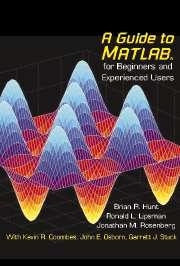6 - M-Books
Published online by Cambridge University Press: 05 June 2012
Summary
MATLAB is exceptionally strong in linear algebra, numerical methods, and graphical interpretation of data. It is easily programmed and relatively easy to learn to use. As suchit has proven invaluable to engineers and scientists who are working on problems that rely on scientific techniques and methods at which MATLAB excels. Very often the individuals and groups that so employ MATLAB are primarily interested in the numbers and graphs that emerge from MATLAB commands, processes, and programs. Therefore, it is enough for them to work in a MATLAB Command Window, from which they can easily print or export their desired output. At most, the production technique described in Chapter 3 involving diary files is sufficient for their presentation needs.
However, other practitioners of mathematical software find themselves with two additional requirements. They need a mathematical software package embedded in an interactive environment — one in which the output is not necessarily “linear”, that is, one that they can manipulate and massage without regard to chronology or geographical location. Second, they need a higher-level presentation mode, which affords graphics integrated with text, with different formats for input and output, and one that can communicate effortlessly with other software applications. Some of MATLAB's competitors have focused on such needs in designing the interfaces (or front ends) behind which their mathematical software runs. MATLAB has decided to concentrate on the software rather than the interface — and for the reasons and purposes outlined above, that is clearly a wise decision.
- Type
- Chapter
- Information
- A Guide to MATLABFor Beginners and Experienced Users, pp. 91 - 100Publisher: Cambridge University PressPrint publication year: 2001



